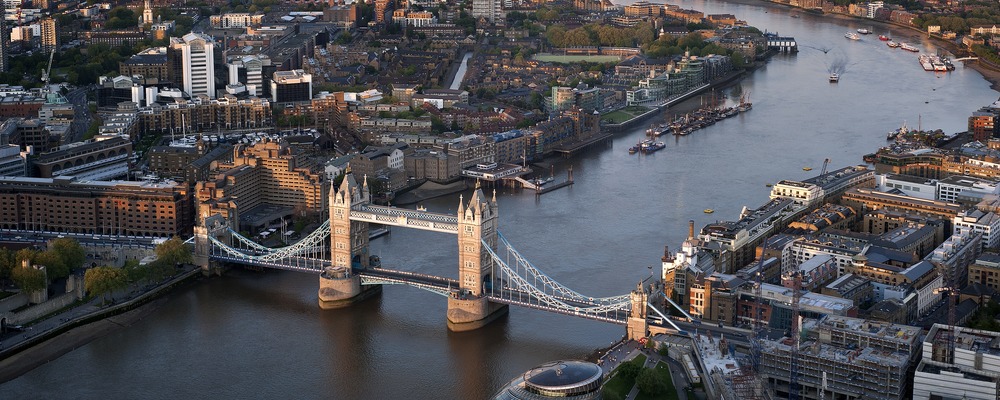Spotlight on Tower Hamlets
Building more new homes than anywhere else in the Capital,
Tower Hamlets will soon have the densest population in London. Set to benefit massively when Crossrail arrives in 2018, buying property now in this more-affordable borough could be a wise investment.
The changing face of Tower Hamlets
Nestled between the
City of London in the west and Stratford's Olympic Park in the east, Tower Hamlets is home to the contrasting areas of
Canary Wharf, Whitechapel and Bow. Over the past decade, two different regenerative forces have been transforming this borough. The Olympic effect has been spilling over from neighbouring Stratford and the 'City fringe' growth area has been relentlessly spreading east.
Since 2009, Tower Hamlets has been averaging 35 decisions on residential planning developments per year, compared to a London-wide average of just nine. And it approves 91% of those applications, which is why it will soon be the densest borough in the Capital.[1] A combination of new homes, improving transport links and great walk-to-work opportunities is making Tower Hamlets a popular destination for buyers and renters.
Aldgate – desirable new homes for walk-to-workers
Over the last few years, apartments in the City’s fringes have been snapped up by buyers keen to live within walking distance of the Square Mile. With the City's workforce set to grow by 50,000 between now and 2026[2], this demand can only increase. One area taking full advantage of the walk-to-work trend is Aldgate. Since an ambitious regeneration plan was approved in 2007, the area is fast becoming a hub for new mixed-use developments that offer stylish modern living.
No longer deserted after 7pm, Aldgate is set to become home to 2,000 more people by the end of 2018.[3] With the creation of two new public spaces as part of the nearby Aldgate Project, investment in the area is showing no signs of slowing. A stone's throw from the City, it's also close to fashionable neighbourhoods like Shoreditch and Hoxton. And with Whitechapel is just one stop or a mere 10-minute walk away, prices and demand are expected to rise further with the Crossrail effect.
Whitechapel is cheapest in the City fringe – but for how long?
Whitechapel's fortunes began to improve when the Overground extension arrived in 2010, but it's Crossrail that's proving the game-changer. When the new Crossrail interchange opens in Whitechapel in 2018, it will reduce the commute to Canary Wharf to just three minutes and provide direct access to Heathrow in 38 minutes.[4] Since construction of the new Elizabeth line began in 2009, average house prices here have increased by 60%[5], helping to trigger a building boom that will bring many hundreds of new homes to the area.
A landing spot for successive waves of newcomers, Whitechapel is held in special affection by many Londoners. The latest group to arrive here are young professionals seeking affordable places to live. With many firms now being priced out of Tech City in
Shoreditch[6], Whitechapel is a cheap and logical extension to the digital cluster. If the increase of new co-working spaces in the area is anything to go by, this will be London's next housing hotspot.[7]
Canary Wharf – thousands of sky-high family homes on the way
By 2030, the population of London is set to rise by 1.5 million. The majority of this growth is taking place in the east of the capital[8], and Canary Wharf is at the heart of the expansion. An ambitious building programme has been launched with thousands of new homes on the way. Many of these will be ready in time for the arrival of the first Elizabeth line Crossrail trains in 2018, making the West End just a 14-minute train journey away.[9]
Previously, the only residences here were luxury crash pads for bankers but CanaryWharf is reinventing itself. New high-rise homes are to offer family-size flats, with aerial crèches and playgrounds, new schools and parks nearby. Soon to grace the skyline is a 60-floor apartment block which will house 560 luxury flats, and a 20-acre scheme at Wood Wharf that's set to create 3,200 homes – a quarter of which will be affordable housing.[10]
As more shops, restaurants and parks have been added to the estate in recent years, and with plenty of exhibitions and festivals are being held here, it's becoming a more desirable place to live. The addition of Crossrail to existing DLR and Jubilee line services enhance the investment opportunity. For many years, the area has been relatively cheap but property values are rising. Eventually, CanaryWharf is predicted to command the same values as the City, Bankside and the prestigious new Nine Elms development in
Battersea.[11]
Current asking prices and rental yields
As of January 2017, the average value of properties in the borough of Tower Hamlets is £527,438. This has seen an increase of 1.92% in the last 12 months and 50.47% in the last five years. For a
two-bedroom apartment, the average asking price is £734,479 and the average asking rent is £2,314pcm, which means the gross rental yield is currently 3.80%.[12]
This content is correct as of January 2017





